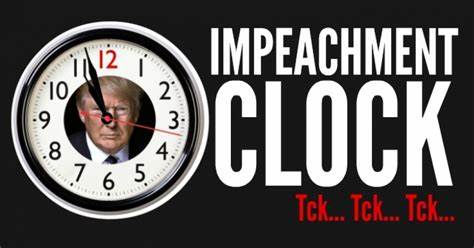This process begins shortly after the Senate resumes on January 3rd, and usually takes about two or three weeks. In the past, this process has dragged on for many weeks because of filibusters and other targeted attempts to obstruct certain nominees.
这一进程在参议院1月3日恢复后不久就开始了,通常需要2到3周的时间。在过去,由于阻挠议事和其他有针对性的阻挠某些提名者的企图,这一进程已经拖延了好几个星期。
For instance, in July 2013, Obama's nominee for administrator to the EPA waited 136 days for Senate confirmation, longer than any of her 12 predecessors. Frustrated by this long and arduous process, the Democrat-led Senate passed what's called the 'nuclear option' in 2013, allowing Senators to approve most nominees with a simple majority rather than a 2/3s vote.
例如,在2013年7月,奥巴马提名的环保局局长候选人等待参议院确认等了136天,比她的12位前任中的任何一位都要长。由于这漫长而艰巨的进程让人感到折磨,在2013年,民主党领导的参议院通过了一项被称为“核选项”的规则,允许参议员以简单多数而不是2/3投票通过大多数被提名人。
This means that if Democrats wanted to block Tillerson or Sessions or any of Trump's other Cabinet picks with a filibuster, they wouldn't be able to, thanks to a rule change they themselves acted. But even if the Senate did veto any of Trump's nominees, they may still be placed in positions of power.
这意味着,如果民主党人想通过阻挠议事来阻止蒂勒森、塞申斯或特朗普的任何其他内阁人选,他们将无计可施,这是由他们自己制定的规则修改所造成的。但即使参议院确实否决了特朗普的任何提名人选,他们仍然可能获得职权。

The President has the power to unilaterally appoint roughly 300 people to fill a wide range of jobs within the federal government. For instance, when the Senate rejected John Tower in 1989, President George H. W. Bush appointed him to lead the Foreign Intelligence Advisory Board, a position that didn't require Senate approval.
总统有权单方面任命300人左右,以填补联邦政府内部的各种职位空缺。例如,在1989年,参议院否决了约翰·托尔,乔治·赫伯特·沃克·布什总统任命他为外国情报顾问委员会主席,而这一职位不需要参议院批准。
As Trump seems to value his nominee's loyalty over their experience or fitness for the job, it's unlikely we'll see them excluded from Washington altogether.
特朗普似乎更看重他的提名人的忠诚度,而不是他们的经验或者是否适合这份工作,因此,我们不太可能看到他们完全被排除在华盛顿之外。
Besides being worried about Trump's nominations for Cabinet, many opposing the President-elect have already started talking about his potentially illegal or unconstitutional plans, for example, prosecuting people who burn the American flag. Some people are even talking about impeachment, before Trump even starts his first term.
除了担心特朗普的内阁提名外,许多反对这位当选总统的人已经开始谈论其潜在的违法或违宪计划,比如起诉焚烧美国国旗的人。有些人甚至在特朗普开始第一个任期之前就开始谈论弹劾。
So, how is it that presidents are impeached? Find out in this video. The first president to face impeachment was Andrew Johnson in 1868. Johnson had taken over the presidency after Lincoln was assassinated. Congress passed the Tenure of Office Act, which prevented the president for removing a member of his Cabinet without Senate approval.
那么,总统们是如何被弹劾的?请在本视频中找到答案。1868年,安德鲁·约翰逊成为第一位面临弹劾的总统。林肯遇刺后,约翰逊接任了总统一职。国会通过了《任期法》,阻止了总统在未经参议院批准的情况下罢免其内阁成员。
Thanks for watching Seeker Daily, don't forget to like and subscribe for more videos every day!
感谢观看Seeker Daily,不要忘记每天点击喜欢和订阅更多视频!













